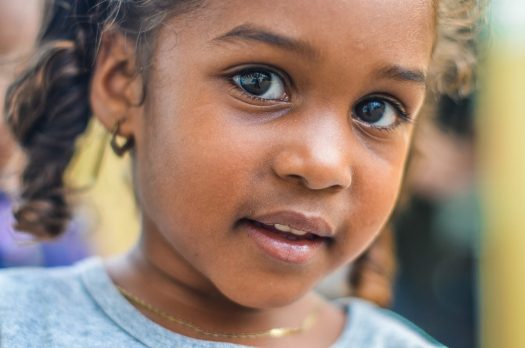By Mollie Romano, Ph. D., CCC-SLP
Watching children’s communication expand during the second year of life and through preschool is a great deal of fun to witness! From short, telegraphic phrases (“Mommy do”) to longer more elaborate sentences, the toddler and preschool years bring many achievements in children’s language, speech, and social use of communication. It’s hard to believe that children go from tiny, wrinkled newborns who communicate with cries and coos to preschoolers who can tell stories and even understand humor in just a few short years! Here are a few highlights of the incredible things that children learn to do in the toddler and preschool years that open up a world of conversation and fun for children and their caregivers.
Look who’s talking!
Little word learners combine words together to make early sentences. At first, “sentences” are made up of two words linked together. Many children at this age latch on to the very powerful word, “No” to make many early combinations! “No Daddy!” or “No doggy!” paired with a shake of the head makes a toddler king of the castle! As children pick up more adjectives and verbs, they are able to combine more words together in new ways. For example, “Car goes fast” or “Mommy’s cup.” These combinations allow children to describe their world in more detail and it makes them fun conversationalists who soak up words by the minute. My oldest daughter used her new-found word combinations to tell me about something fascinating she saw in my glass at a restaurant as a toddler. “Yellow ice! Yellow ice!” She squealed. It took me a moment, but I realized that she saw a lemon! Her words directed me to it and gave me a chance to show her the lemon, which was another word learning opportunity.
Say what?
As toddlers and preschoolers gain more language, their speech isn’t always clear to people who are not close friends or family. Their little brains are coordinating what they need to do with their tongue to make “adult-like” sounds, and they often simplify their speech in the process. Many times, children take groups of consonant sounds and use only one sound in its place (i.e., “string” becomes “ting”). Children also leave out whole syllables and “tomato” becomes “’mato.” While many of these patterns are typical and are expected during this developmental period, about 75% of children’s speech should be intelligible to unfamiliar listeners around the age of three. Yet even by three, children’s speech is not perfect and many error patterns continue, but a listener can usually discern what the child’s speech means within the context of what is happening around them.
Tell me a story!
We know the importance of reading to young children, but beyond that, a child’s ability to tell simple stories and events is an extremely important part of language development. During the preschool years, a child develops “narrative skills” or an ability to talk about important things that happened to them or that they imagined. Telling a story, even a simple one, requires a lot of skills – such as describing who is in the story, what happened, and in what order, all while using complex vocabulary. Little by little, though, preschool age children hone these skills, which in turn lead to better literacy outcomes later on. A great way to start working on narrative skills is simply to ask, “What did you do at school today?” and help the child talk about what they did first, next and last. Of course, the more stories you hear, the more you can tell!
Image from Pixabay.com, CC0













